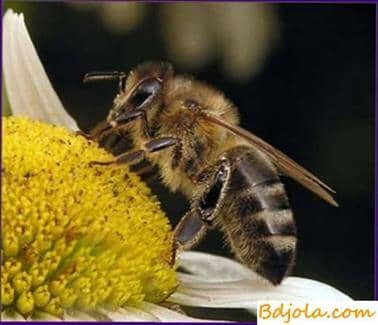
Salt toxicosis is an infectious disease of bees, resulting from eating more or less significant amounts of table salt.
Causes of the disease. Salt toxicosis develops when large amounts of mineral salts enter the body of bees with food or water. This is observed when feeding bees with sugars of sugar with an admixture of mineral salts, giving them water containing salt over 0.5%, or when watering bees with mineral fertilizers by bees, as well as when honey bees are collected with high content of mineral salts. The presence in the diet of 2% or more of table salt or other salt leads to the death of bees.
Course of the disease. The disease manifests itself in autumn, winter and spring after feeding the bees with sugar syrup, honey or water with a high content of mineral salts.
Symptoms of the disease. Initially, the bees are excited, the noise in the hive increases, the bees creep along the nest, and many of them creep out of the hive. In the future, they become sluggish, lose the ability to fly, suffer from diarrhea. When a salt toxicosis occurs in winter, the winter club is disrupted. The bees are mostly sick.
The diagnosis of salt toxicosis is based on the chemical examination of the feed to determine the amount of ash residue, i. e., the percentage of salts. It is also necessary to exclude infectious and invasive diseases.
Prevention. The food of bees should not contain elevated concentrations of mineral salts.
Control measures. Replacement of feed containing salt, syrup from pure sugar or benign honey.
Обработка пчел муравьиной кислотой весной. Отвары на травах с медом.
Diseases of bees